
Innovation
Agents of Change
Jonathan Spiegel ’17, Daniel Delgado ’17, Jillian Jacques ’19, and Amanda Arango ’19, define a new generation of innovators and prove that nothing has to be the way it is now.
ALUMNI MAGAZINE
Tim Ryan ’94, EMBA ’96, head of the Culinary Institute of America, believes in working hard and eating well.

In 1971, when he was 13 years old, Tim Ryan filled in for a friend who worked as a dishwasher at a local Pittsburgh restaurant. At the end of the shift, Ryan was paid $10 in cash and given a steak dinner.
It was a good haul for a day’s work. It was also a day that would change Ryan’s life: he’d stumbled headlong into a vocation ... and a dream. "The kitchen was a magical place," he says, "the flames and knives and the ballet performed behind the line by the chefs and the wait staff." The chef asked Ryan to come back, and soon he was working as much as he could, eager to spend time in the kitchen. In many ways, he never left.
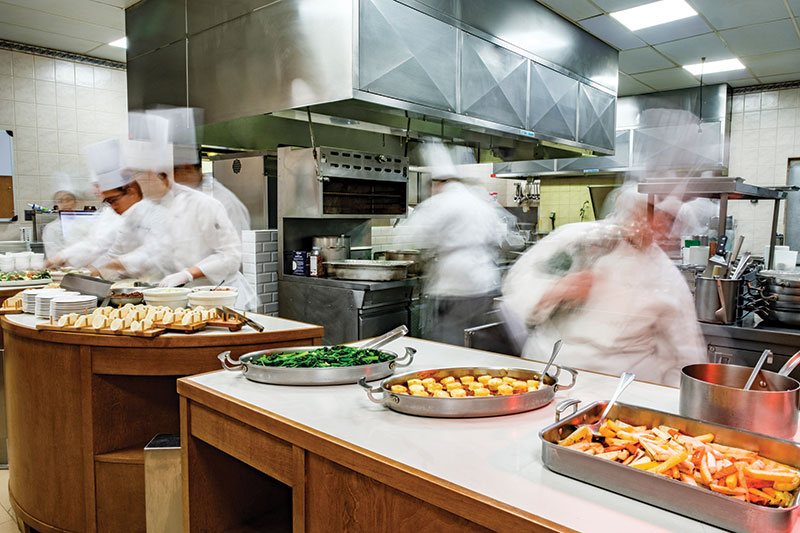
Ryan has spent the past 37 years at the Culinary Institute of America and has served as its president since 2001. During his tenure, the Institute launched its famed American Bounty Restaurant and expanded educationally and geographically, offering new academic programs and degrees, including the world’s first bachelor’s degrees in management of culinary arts and in baking and pastry arts and opening campuses in Napa County, San Antonio, and Singapore. Ryan himself has received abundant recognition: at the notably young age of 26, he was named a Certified Master Chef, and at 36 he became the youngest national president of the American Culinary Federation. He led the ACF Culinary Team USA to victories at the Culinary Olympics and the first Culinary World Cup, and he is one of only five Americans to receive the Presidential Medal from the World Association of Chefs’ Societies. Most recently, he was named by Pittsburgh Magazine as one of the "50 Greatest Pittsburghers of All Time" — a list that includes Jonas Salk, Andrew Carnegie, and Martha Graham.
"What medium allows for greater creativity than food? It encompasses all the senses. It is the ultimate artistic expression and lends itself to endless innovation."Tim Ryan ’94, EMBA ’96
Back in the early ’70s, Ryan couldn’t have dreamed that he’d one day reach these heights. His first step? Asking the chef of that Pittsburgh restaurant to teach him how to cook. The chef tried to talk him out of it, telling Ryan that he was a smart kid and should become a lawyer. "But I didn’t know any lawyers," Ryan says. "We were a poor family. Here was a real person, who was dynamic and very successful, working in this cool environment." Ryan insisted his future was working with food.
Some people might scoff at that career choice. But, as Ryan points out, the food industry is the largest in the world. "Most people don’t know that," he says. "That’s why I always give them a statistic based on our research: 100 percent of the world eats food." Jokes aside, Ryan is an evangelist for the food world and restaurant industry, and the opportunities they offer to young people — opportunities that weren’t so clear when he was starting out.
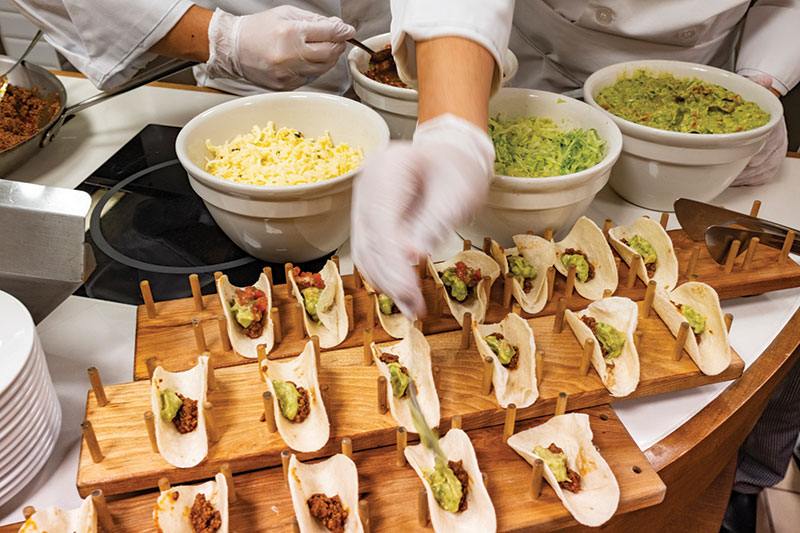
Ryan has overseen a multitude of changes at the Culinary Institute of America. He first came to the school as a student, and, as did every other aspiring chef at the time, wanted to study French cuisine. After graduating in 1977, Ryan traveled to Lyon, France, to study in the kitchen of Paul Bocuse, a famous chef associated with nouvelle cuisine, a lighter and more modern approach to French food. Upon his return, hoping that he would become the American version of Bocuse, Ryan opened a French restaurant in his hometown.
A few years later, Ryan met Ferdinand Metz, then president of the Culinary Institute of America. Metz wanted a young American chef to develop a new concept: a restaurant that would treat American cuisine with the reverence usually reserved for the French. In 1982, at the age of 24, Ryan returned to the College as a faculty member, determined to set that idea in motion.
"We do the preparation, we cook it, we serve it, and by the end of the day, we have a sense of accomplishment."Tim Ryan ’94, EMBA ’96
There was just one problem: the food. "My generation of graduates led an American food revolution when we said, ‘The chickens here don’t taste like chicken.’ " Like many chefs who’d studied in France, Ryan came back with a new awareness of what American supermarkets lacked. "If you walk down your supermarket aisle today, you’ll see the changes we brought about," Ryan says. "When I was a kid, there were heads of iceberg lettuce, onions and carrots and celery. If there were mushrooms, they were white button mushrooms. Chili peppers, forget about it."
The other part of that revolution was using fresh, authentic ingredients to cook American cuisine — a crazy notion in the early ’80s, when most people thought there was no such thing. The American Bounty Restaurant was one of the first to challenge that idea, with a menu that indicated the origin and inspiration of many of its dishes, which included Cajun shrimp-stuffed mirliton squash; ham roulades Maryland style, stuffed with crabmeat and corn; and cioppino, a fish stew from San Francisco. Today it focuses on the seasonal and regional specialties of its Hudson Valley home.
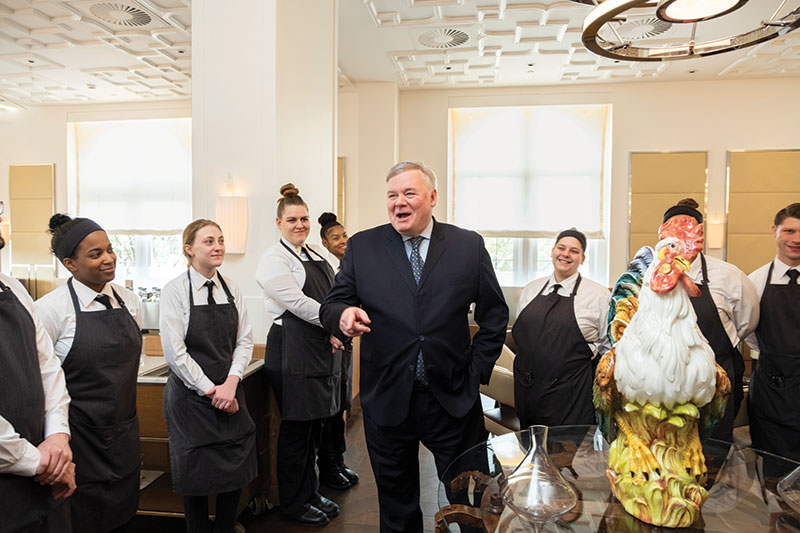
By joining the Culinary Institute of America, Ryan had stepped off his path of becoming the American Paul Bocuse. But at the school, he’d discovered a new version of his original dream. "I was a student here and loved it, but it’s completely different being a faculty member," he says. "You’re impacting young people’s lives in a much more powerful way." One day, Ryan told Metz that he hoped to eventually serve as president of the school — an audacious thing for someone in his 20s to say to the then-president, Ryan admits. Metz helped Ryan brainstorm 20 tasks he needed to complete if he hoped to achieve that goal, including earning a doctoral degree (Ryan had an associate’s degree from the college at the time), becoming a Certified Master Chef, and moving into the school’s administration. Metz also gave him a critical piece of advice: There are no guarantees.
This did not dissuade Ryan. He enrolled at the University of New Haven to further his education. Ryan was living in Hyde Park and working full time, and he drove two hours to West Haven several times a week to take classes at night. After earning his bachelor’s, Ryan entered the University’s Executive MBA program. "In my cohort there were people who were experts in logistics and finance and marketing and so on," he says. "It was a great experience, because you learned not just from the faculty and your own studies, but from your classmates."
"We had a great day. Look at what we did. We made all these people happy."Tim Ryan ’94, EMBA ’96
By this time, Ryan had joined the Culinary Institute of America’s administration, focusing on increasing appreciation of cuisines from around the world. Two decades ago, the college held its first annual Worlds of Flavor conference, which this year will introduce attendees to — among many other offerings — the tandoor ovens of South Asia, the amphora-aged wines of Georgia, and the markets of Istanbul, Persia, and the Indian state of Kerala. Two years later, Ryan achieved his dream of becoming the school’s president.
Ryan’s tenure has also included outreach projects focused on public health and environmental sustainability. In 2004, the school launched Healthy Kitchens, Healthy Lives — a partnership with the Harvard T.H. Chan School of Public Health which features an annual leadership conference for health professionals who want to learn more about nutrition. Another partnership with the Harvard School of Public Health is Menus of Change, an initiative fueled by both social responsibility and an awareness of opportunity. The research on what people should and shouldn’t eat is clear, Ryan says. "People choose French fries over carrot sticks because they taste better," he explains. "Our challenge is: how do we make the healthy things as enticing and delicious as French fries? As we learn how to do that, we’ll sell more carrot sticks, and the industry will make money. It will be better for people and better for the environment."
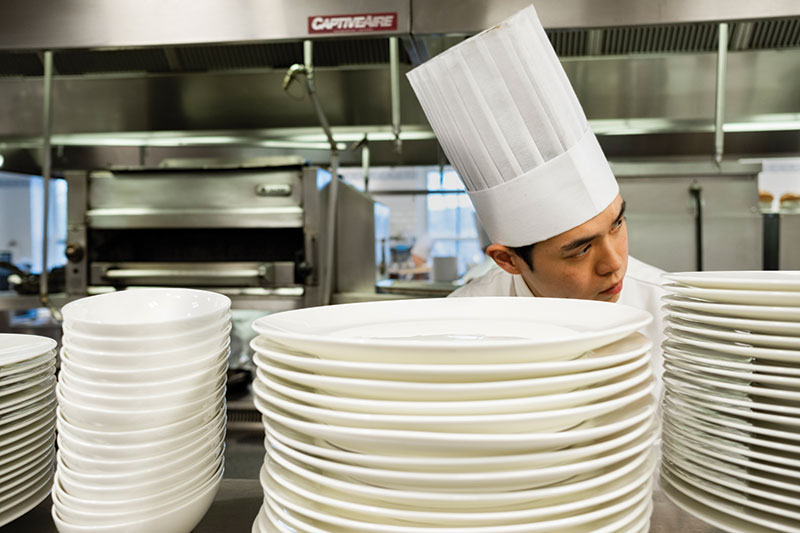
Other than his family, Ryan’s greatest source of pride is his career. "This has been my life’s work," he says. Chefs, he argues, are entrepreneurs, inventors, and artists. "What medium allows for greater creativity than food? It encompasses all the senses. It is the ultimate artistic expression and lends itself to endless innovation." Yet he feels the restaurant industry is often misunderstood.
"People say we work so hard, and kitchens are hot, and there are low-paying positions," he says. "I would argue that if you want be successful in any profession, you’re going to have to work hard. I don’t know that any restaurant is that different from an accounting firm or a law firm or a tech firm. I’m willing to bet that folks at Google work pretty hard."
Ryan’s trajectory has been described as rising from the dishwashing room to the boardroom. Yet he argues that his path is not that unusual and that he, like so many others, was drawn to the kitchen not just for the financial opportunities, but for two rewards that should not be overlooked: the chance to make something tangible and the opportunity to participate in an experience whose end goal is happiness. Restaurants are about taking care of people and helping them enjoy themselves and celebrate, he says. "We come in, we have a bunch of raw product," Ryan says. "We do the preparation, we cook it, we serve it, and by the end of the day, we have a sense of accomplishment. We say, ‘We had a great day. Look at what we did. We made all these people happy.’"

Jonathan Spiegel ’17, Daniel Delgado ’17, Jillian Jacques ’19, and Amanda Arango ’19, define a new generation of innovators and prove that nothing has to be the way it is now.
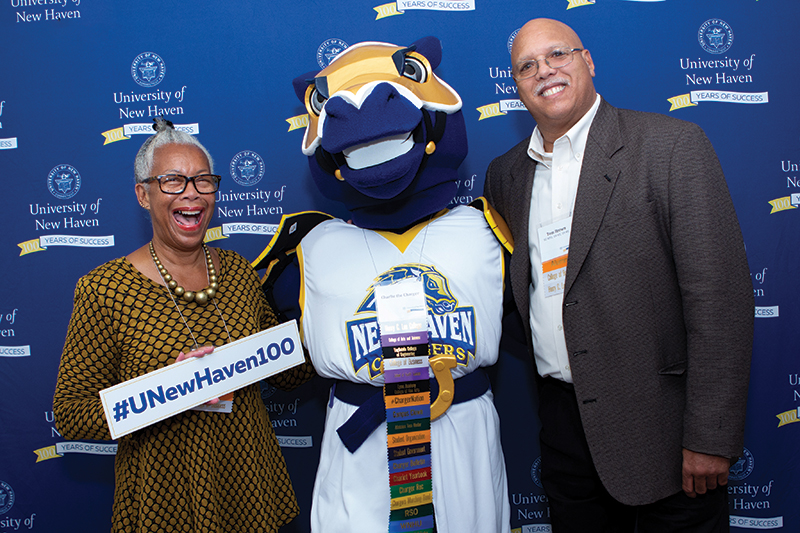
In advance of our Centennial in 2020, we took the University of New Haven on the road, hosting a series of signature events to commemorate this milestone anniversary.

Tim Ryan ’94, EMBA ’96, head of the Culinary Institute of America, believes in working hard and eating well.